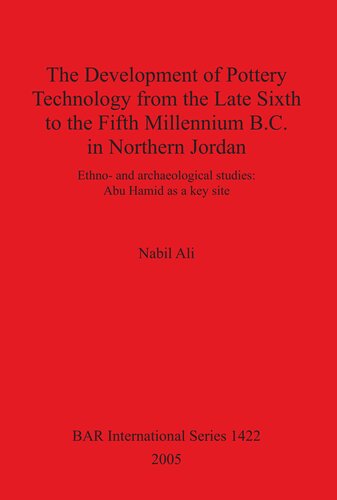

Most ebook files are in PDF format, so you can easily read them using various software such as Foxit Reader or directly on the Google Chrome browser.
Some ebook files are released by publishers in other formats such as .awz, .mobi, .epub, .fb2, etc. You may need to install specific software to read these formats on mobile/PC, such as Calibre.
Please read the tutorial at this link: https://ebookbell.com/faq
We offer FREE conversion to the popular formats you request; however, this may take some time. Therefore, right after payment, please email us, and we will try to provide the service as quickly as possible.
For some exceptional file formats or broken links (if any), please refrain from opening any disputes. Instead, email us first, and we will try to assist within a maximum of 6 hours.
EbookBell Team

4.8
44 reviewsThis study is divided into two main parts. Part one presents the ethnoarchaeological study that has been conducted on (late-Sixth to Fifth Millennium BC) pottery production in northern Jordan (the Ajlun Mountain area). It includes the location and environmental setting of the study area, the context of pottery production with reference to potters' socio-economical contexts, and their identity. It also includes the context of pottery production and a description of the technological traditions that have been identified among the potters. Chapters 4 and 5 have been devoted to measuring and explaining the causes of technological similarities as well as differences in the potters' out-put. Part 2 presents the archaeological study. It includes a description of the site of Abu Hamid and its environmental setting. Moreover, it presents the chronology and the sequence of occupation at the site, as well as the spatial and temporal contexts of the sampled pottery sherds. Further, it presents morphological and metric descriptions of the pottery assemblages. Chapters 8 and 9 are devoted to the identification of archaeological pottery forming techniques and the measuring of the technical variations among them. The last chapter presents the explanations of these technical variations.